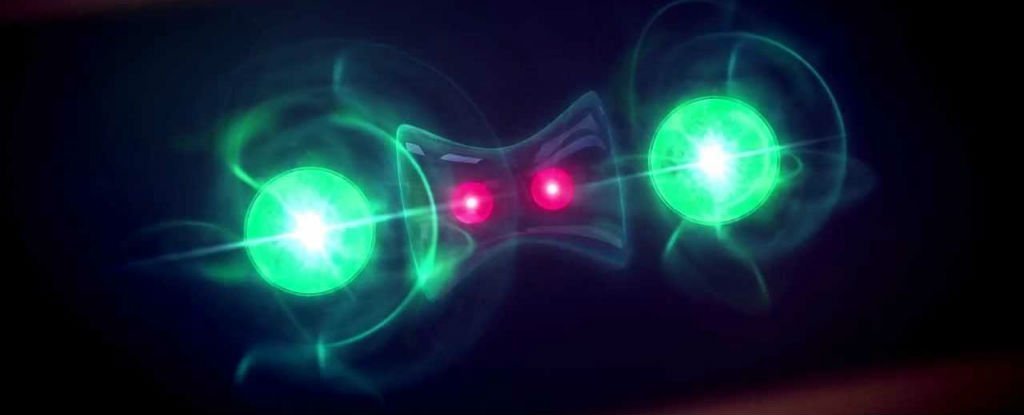“Antarctica is not a unified continent, but a huge wall of ice surrounding the Earth’s continents, as they say in Game of Thrones.” From this statement a few years ago. YouTuber and flat-earther Mark Sargent was at the helm of the Netflix documentary Behind the Curve, about this group of “curious” people who believe that the planet is covered with a giant dome and that the sun and moon revolve in circles above our heads. . Years later, a group of “brave” people decided to get right to the heart of the matter to prove humanity wrong once and for all. It wasn’t what they expected.
Resolve an unfounded argument. A group of 24 flat earthers and 24 advocates of a spherical Earth organized a trip to Antarctica, led by pastor Will Duffy, in an attempt to confirm that the Earth is indeed flat. Dubbed the “Last Experiment,” the expedition focused on testing the existence of the midnight sun, a phenomenon known to be caused by the Earth’s axial tilt.
According to flat earthers, the existence of this phenomenon would put an end to debates about the shape of the planet. But when they reached Antarctica, they found what is now widely accepted: the 24-hour sun is real, strengthening the evidence that the Earth is round.
Reactions and contradictions. No doubt it was a bucket of cold water. Flat earth phenomenon Jeran Campanella (there are some) admitted that he was wrong in a post-trip video, initially stating that the midnight sun does not exist.
The result once again contradicts the fundamental arguments of the flat earth theory, which has already been subject to all kinds of criticism for its resistance to science and over-literal interpretation of religious texts. In this context, the theory has been put forward by conservative US political figures such as Candace Owens and Tucker Carlson, who use their platforms to appeal to religious and science-skeptical audiences.
There was no need to go that far. The truth is that it does not require a journey of thousands of kilometers to find out whether the Earth is spherical or not. All you really need is a stick, and we’ve known this for over 2,220 years when the Greek mathematician, astronomer and geographer Eratosthenes performed one of the most fascinating and simple experiments in history demonstrating the curvature of the Earth. .
While director of the Library of Alexandria, he discovered in a papyrus that at Syena (present-day Aswan) the sun’s rays fell vertically at noon on June 21, so a vertical rod cast no shadow; This is also something that can be observed. in the reflection of the sun in the well. This gave him an idea.
Alexandria Experiment. Intrigued by this phenomenon, Eratosthenes decided to make a similar observation in Alexandria, located about 800 kilometers north of Syena. There, on the same day and at the same time, he noticed that a vertical bar cast a distinct shadow. This inconsistency led him to a fundamental question: How could it be possible for there to be no shadow in one place and no shadow in another at the same time?
Eratosthenes concluded that the only explanation for this was that the earth’s surface was curved. He calculated that the shadow angle at Alexandria was 7 degrees, and using this data along with the known distance between the two cities, he estimated the circumference of the Earth for his time with astonishing accuracy. Moreover, the experiment not only disproved the idea of a flat Earth, but also allowed him to deduce the tilt of the Earth’s axis and establish fundamental concepts in geography such as parallels and meridians.
And then Sagan came along. Eventually, centuries later, Carl Sagan recreated this experiment in his iconic program. UniverseIt shows how a simple stick and careful observation are enough to prove that the Earth is spherical. In his inimitable style, Sagan showed how this discovery changed our understanding of the world, and we can say without a doubt that it remains an elegant and powerful refutation of any of the flat earth theories.
Meanwhile, in addition to the famous experiment, Eratosthenes left a remarkable legacy: he calculated the distance between the Earth and the Sun, proposed a leap year to correct imbalances in the calendar, and created the first world map with parallels and maps. meridians His work not only marked a turning point in ancient science, but also put an end to unfounded speculation more than two thousand years ago, demonstrating the power of critical thinking and scientific observation. What genius.
Image | Roderick Eime
in Xataka | For flat earthers, explaining eclipses is not a challenge, but an opportunity
in Xataka | Flat earthers do not raise their heads: Mike Hughes failed again with his homemade rocket













